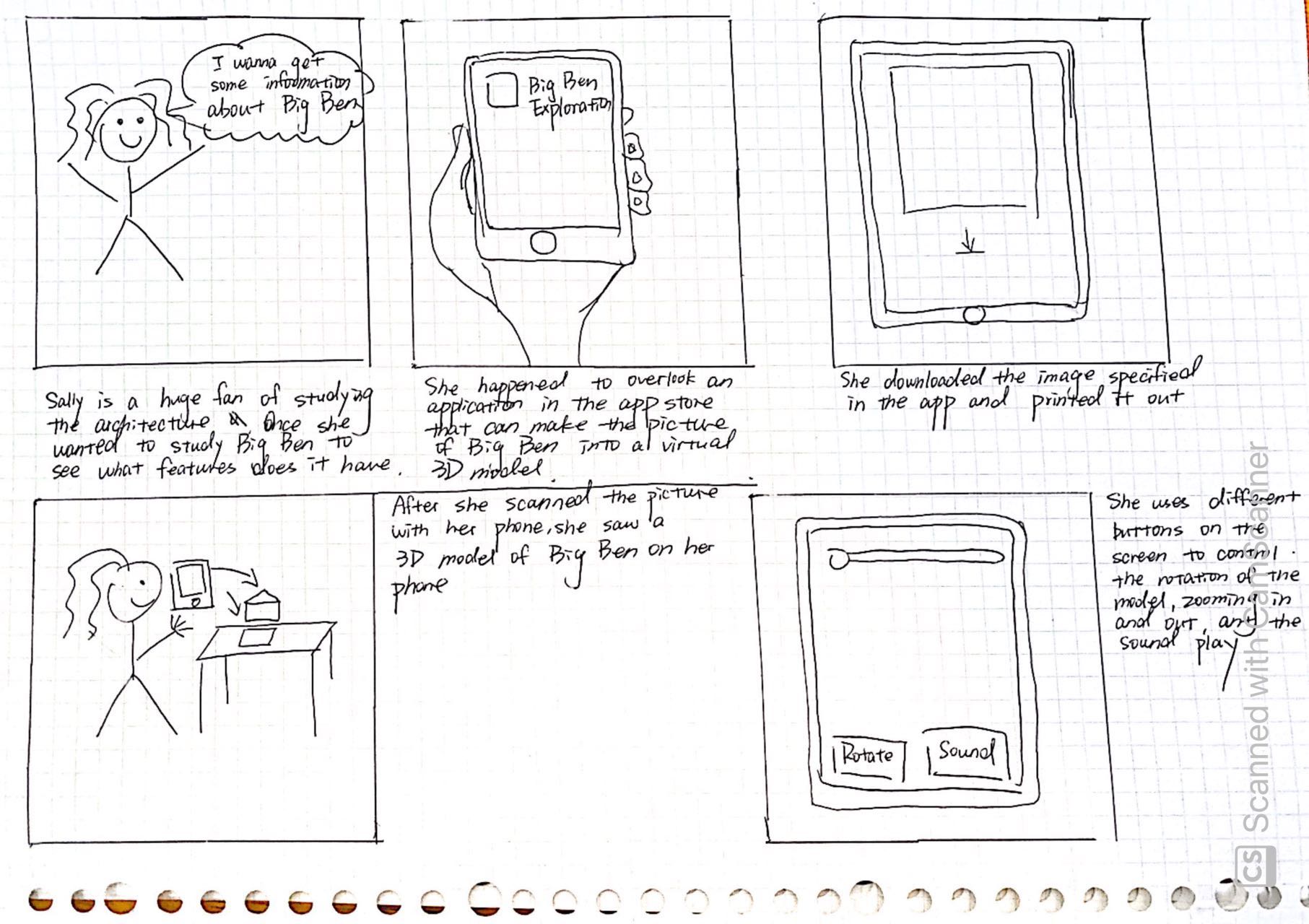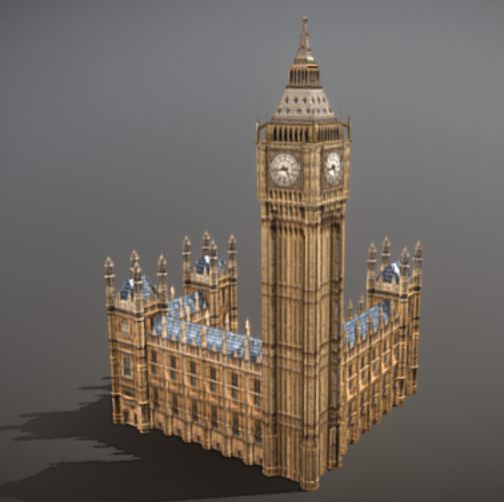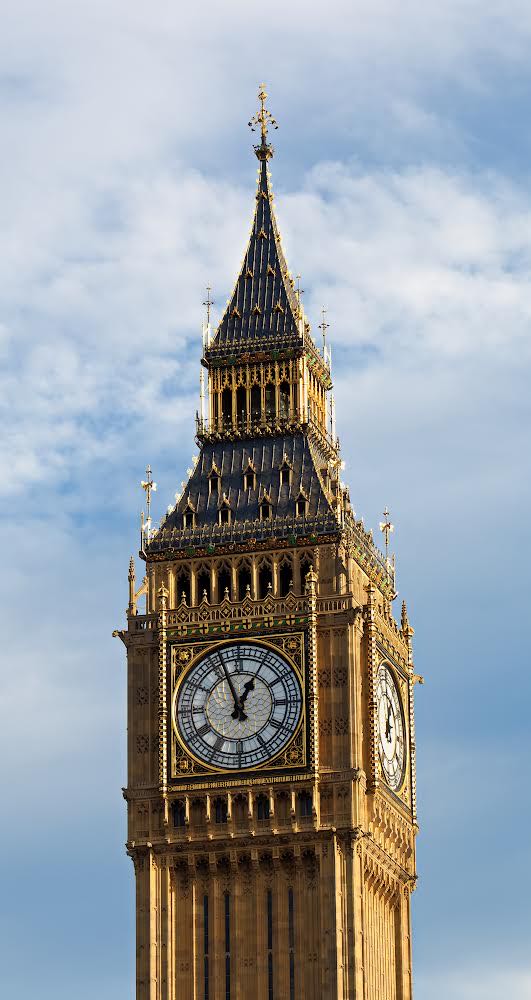Assignment 3 AR Report
Introduction
This application is designed for the tourism industry by using Augmented Reality (AR) Technology. The purpose of this application is to show a scaled-down version of Big Ben in England in order to present the most realistic appearance of the building to users.
Application Description
The application, which uses AR technology, allows users to turn a flat picture into a three-dimensional virtual model through the cameras of different devices. And users could interact with the Big Ben model through on-screen buttons with different functions according to their needs. Potential users of the application are tourists who want to visit Big Ben as well as students and researchers who like to study the aesthetics of architecture. Pictures are difficult to give people a sense of visual impact because they do not show all the features of the building, it is difficult for people to get a comprehensive understanding of the building, and this application can compensate for the limitations of pictures and allow them to view the building from different angles to bring an enriched experience.
For the tourism industry, the use of AR technology is becoming prevalent in the travel industry and is gradually becoming a trend. For this application, when visitors see a two-dimensional (2D) photo of Big Ben, a three-dimensional (3D) model appears after scanning the photo through the camera. This allows users to experience Big Ben as if they were watching it live without having to leave home. AR technology could then give users a realistic visual experience to attract them to visit world-famous buildings like Big Ben to gain publicity and increase the number of visitors during the low travel season (Cranmer, tom Dieck & Fountoulaki 2020). And AR technology could also provide users with a more comprehensive view of the buildings they want to visit.
From another perspective, the famous building presented by AR technology could also possess educational significance. For those who visit Big Ben for its architectural aesthetics, the diorama can show more detailed exterior features to give them more knowledge about the architectural style and philosophy of the time, which is would create learning experiences for users (İlhan & Çeltek 2016). And by improving the cognitive dimension, users will also increase their level of interest in the building itself. This attracts more tourists wanting to explore Big Ben, which will lead to a significant increase in local revenue from tourism.
Interaction Design

For this application, there are three interactive functions that allow users to interact with the Big Ben model. The first interactive function is scaling the Big Ben model by zooming in or out on an equal scale. The purpose of this feature is to allow users to see the full view of Big Ben, as well as to zoom in on the model to see some of the more detailed designs, such as the design of its clocks and the design and colour scheme of the building's roof. The second function is rotation, which allows users to view the Big Ben model in 360 degrees and experience the uniqueness and literary nature of the building from all angles. The third feature is to play the chimes of Big Ben at twelve o'clock, which allows users to have a more immersive experience and thus learn more about the building. It is more suitable for users to use this application by operating the AR technology rather than VR technology because AR technology could be less distracting for users so that they could focus more on the Big Ben itself they want to observe. While VR technology allows users to blend into the environment, but the external scenes sometimes make users forget their real need to use the app, thus greatly reducing the efficiency of using the application. Users only need their mobile phones, tablets, and laptops to use the application to interact with Big Ben easily. However, VR technology requires users to use headsets and controllers, which will greatly reduce the scope of the audience.
Technology Development
This application mainly uses UI buttons that are presented on the interface to control interactive functions, there are two rectangular buttons, respectively, and the function is to rotate and play the sound of ringing the clock. There is also a sliding button that controls the size of the model.
3D Model

A scaled-down Big Ben Model
Image Target

Big Ben
Reference
Cranmer, EE, tom Dieck, MC & Fountoulaki, P 2020, 'Exploring the value of augmented reality for tourism, Tourism Management Perspectives, vol. 35, p. 100672.
İlhan, İ & Çeltek, E 2016, 'Mobile marketing: Usage of augmented reality in tourism', Gaziantep university journal of social sciences, vol. 15, no. 2, pp. 581-599.
Big Ben: https://assetstore.unity.com/packages/3d/environments/big-ben-model-218248
Sound: https://www.pond5.com/sound-effects/item/12657496-london-big-ben-striking-twelve
C#Script Reference:
Leave a comment
Log in with itch.io to leave a comment.